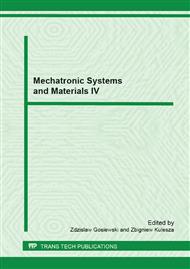p.583
p.589
p.594
p.600
p.606
p.615
p.621
p.627
p.633
Using CompactRIO to Build a Virtual Driver of Hybrid Wheeled Vehicle
Abstract:
The paper presents the concept of virtual driver of hybrid wheeled vehicle. For this purpose was chosen LabVIEW software and CompactRIO dedicated controller. In the LabVIEW software has been built a mathematical model of a wheeled vehicle taking into account the specific characteristics of engines and torque converter. Wheeled vehicle model has been optimized for metropolitan road conditions where there is frequent braking and acceleration of the wheeled vehicle. For the acceleration of the vehicle in the first phase of motion corresponds to the electric unit, and then at an appropriate speed drive is switched to the internal combustion engine. Using LabVIEW and CompactRIO dedicated controller it is possible to build a virtual controller used for testing hybrid powertrain of a wheeled vehicle in the laboratory. The controller requires an accurate mathematical model to build a wheeled vehicle taking into account the exact characteristics of these two units, external forces acting on wheeled vehicle (resistance movement). The use of virtual driver allows the selection of both powertrain of hybrid wheeled vehicle, to test them as engines working separately or simultaneously with the use of the synergy of energy.
Info:
Periodical:
Pages:
606-611
Citation:
Online since:
March 2013
Authors:
Keywords:
Price:
Сopyright:
© 2013 Trans Tech Publications Ltd. All Rights Reserved
Share:
Citation:


